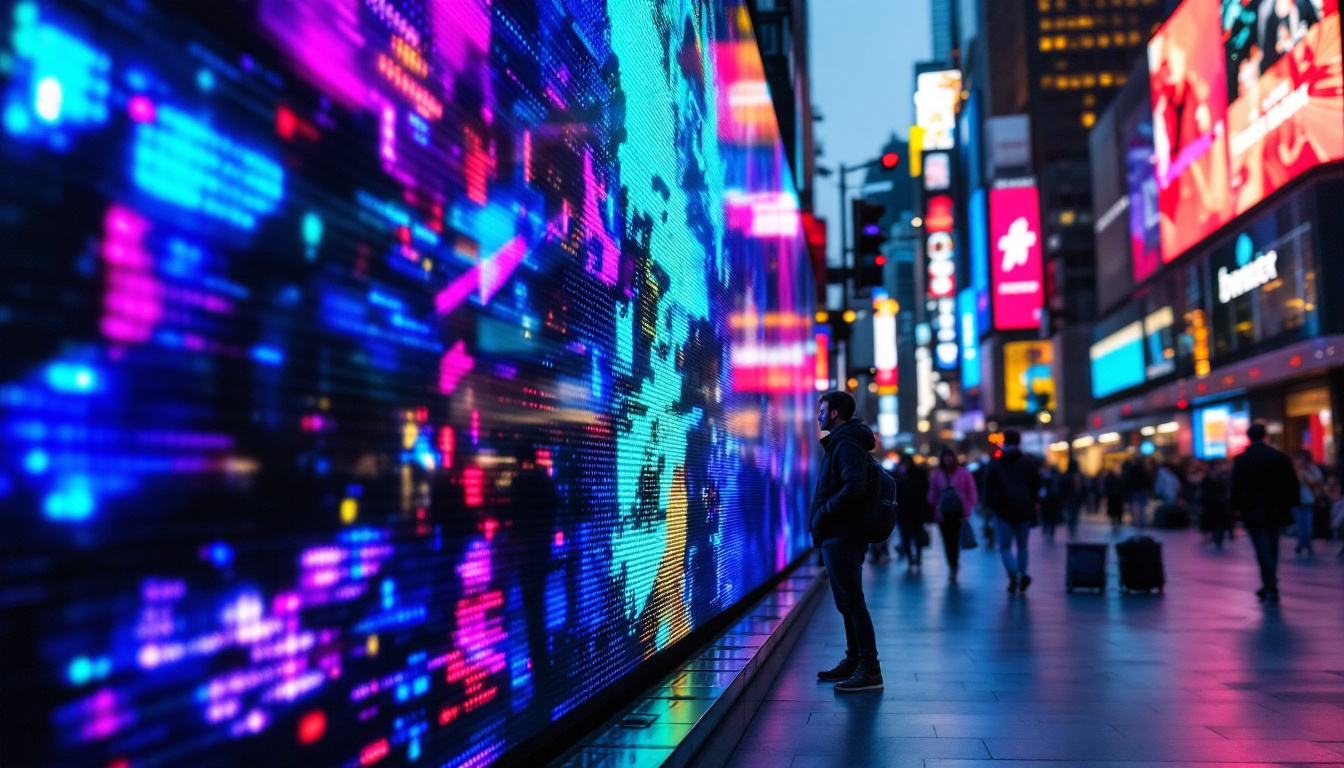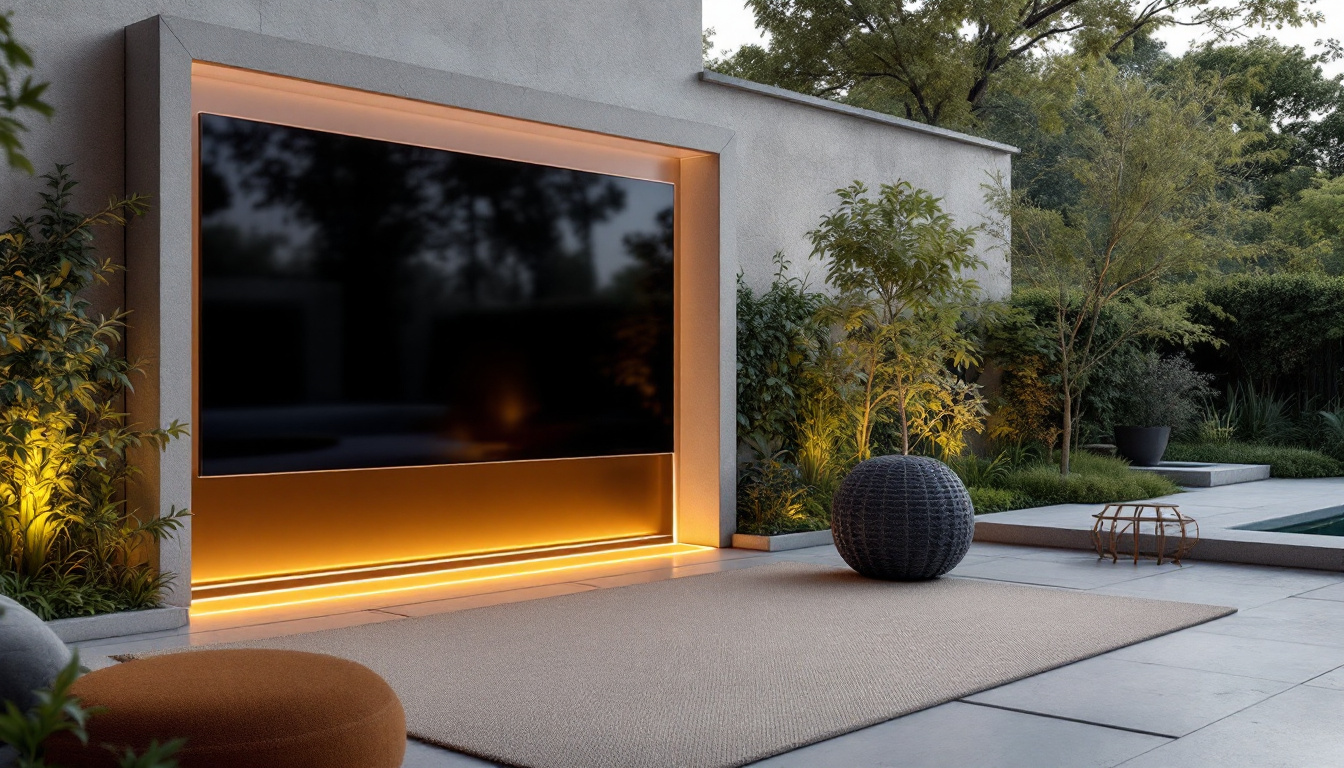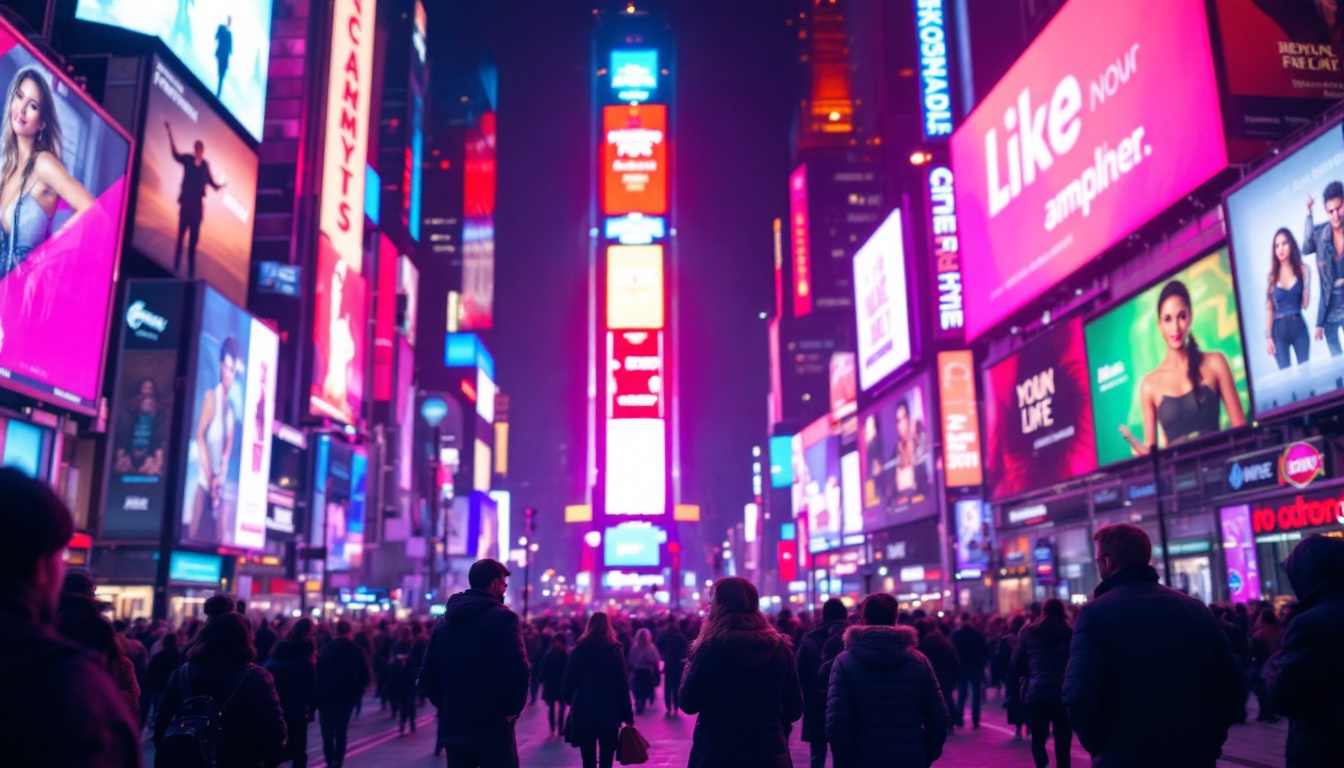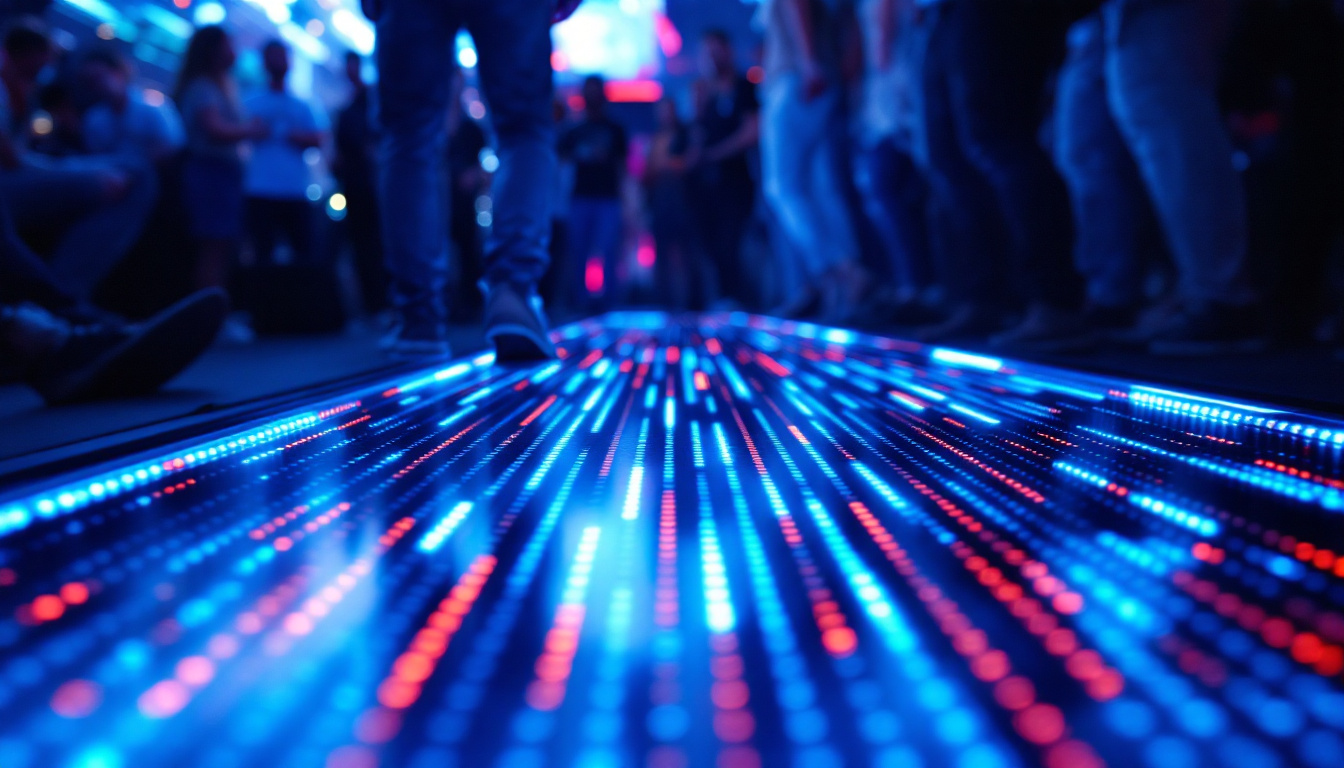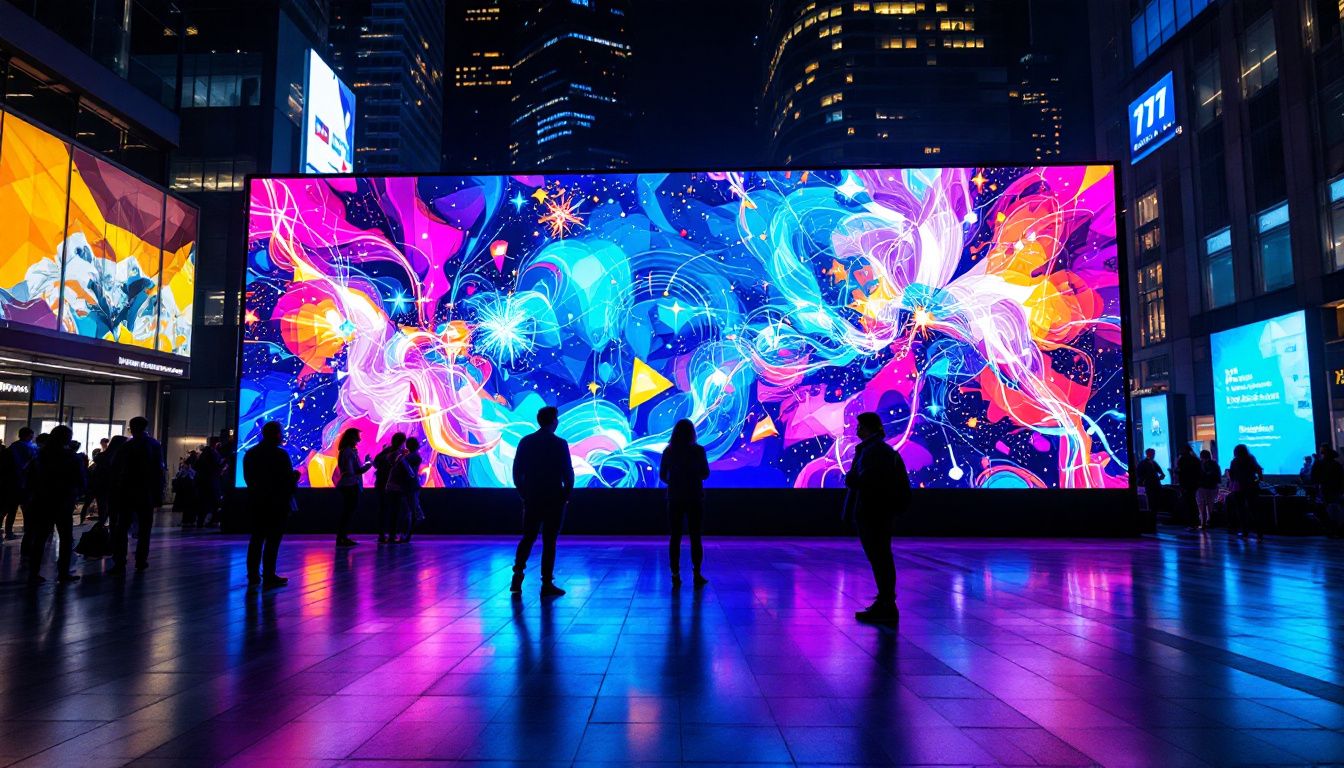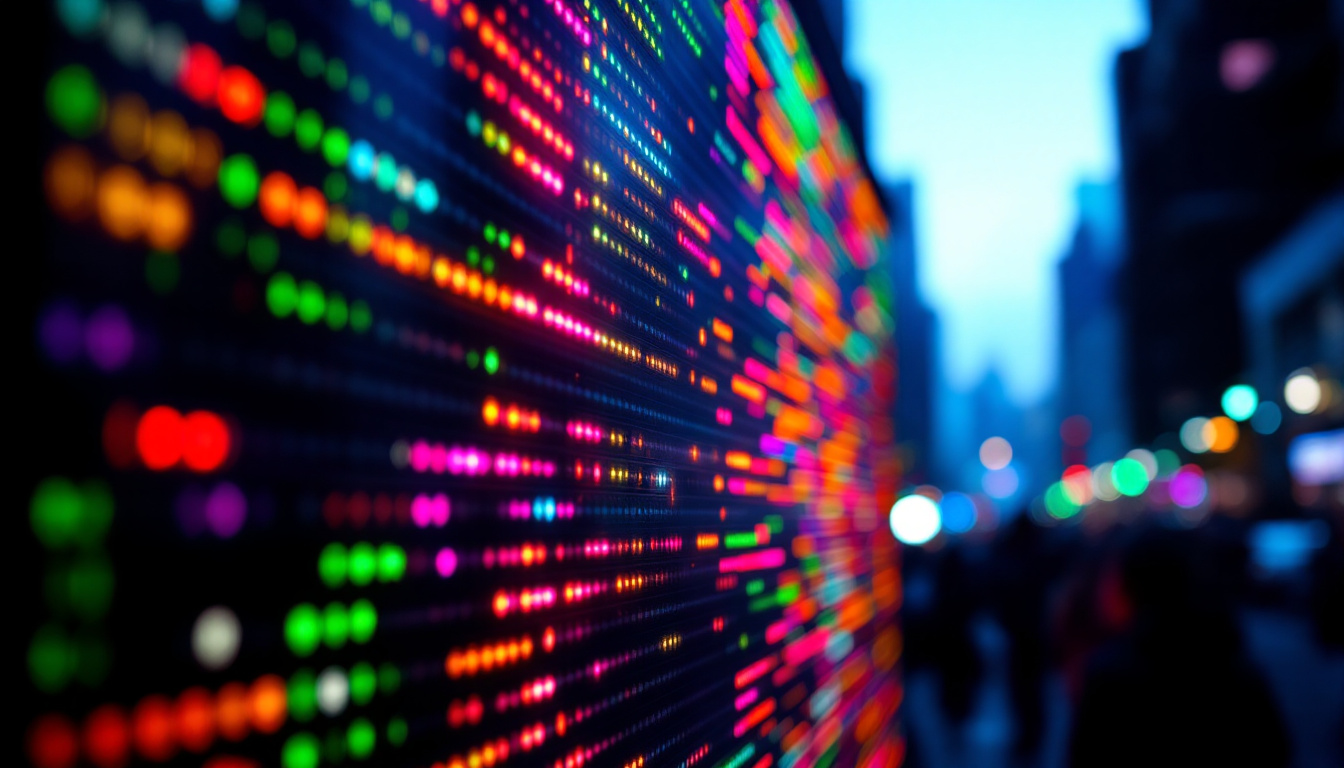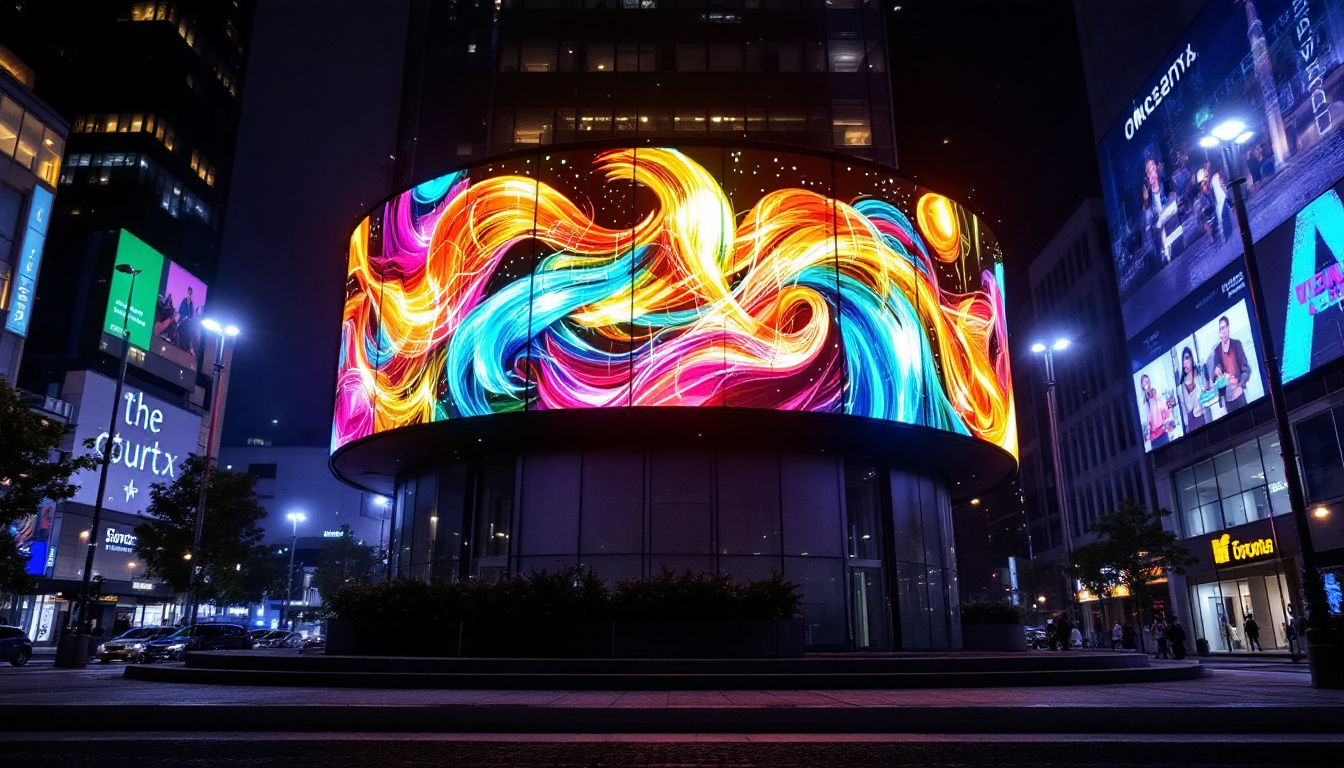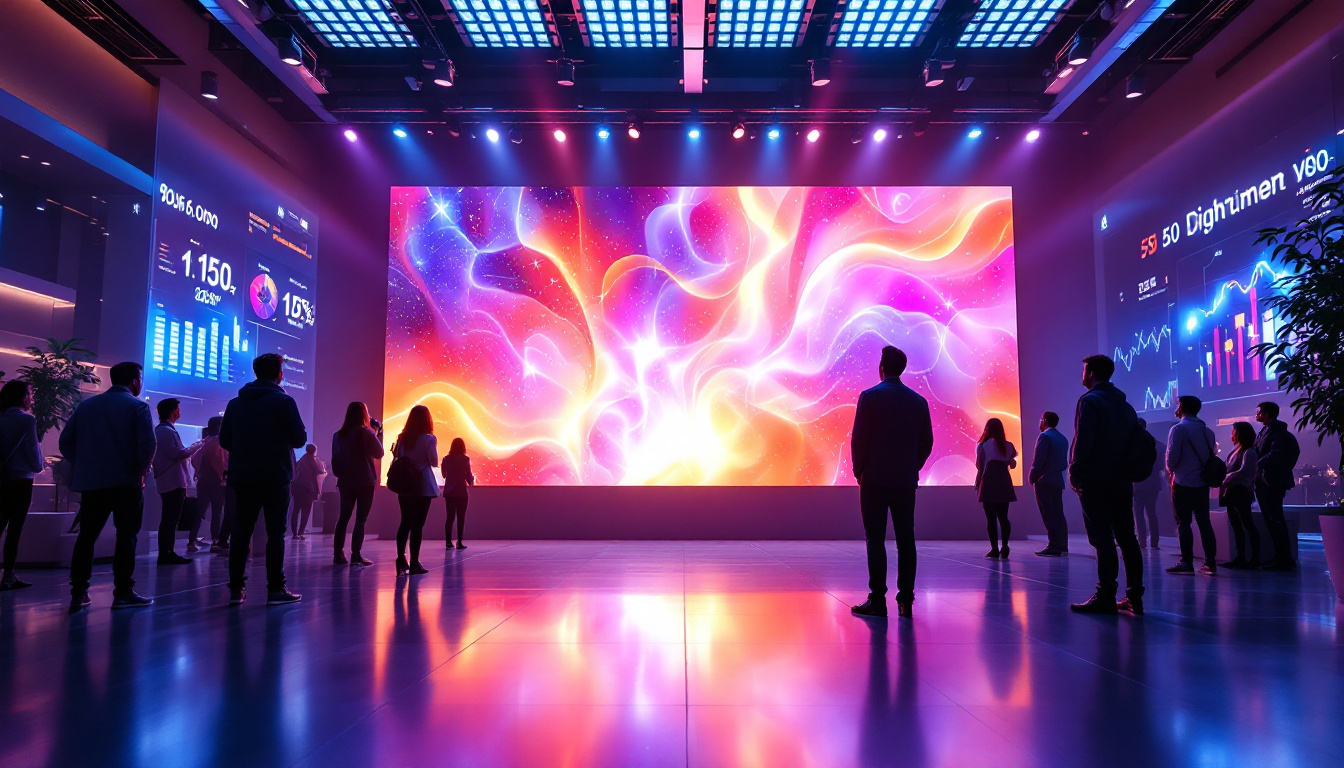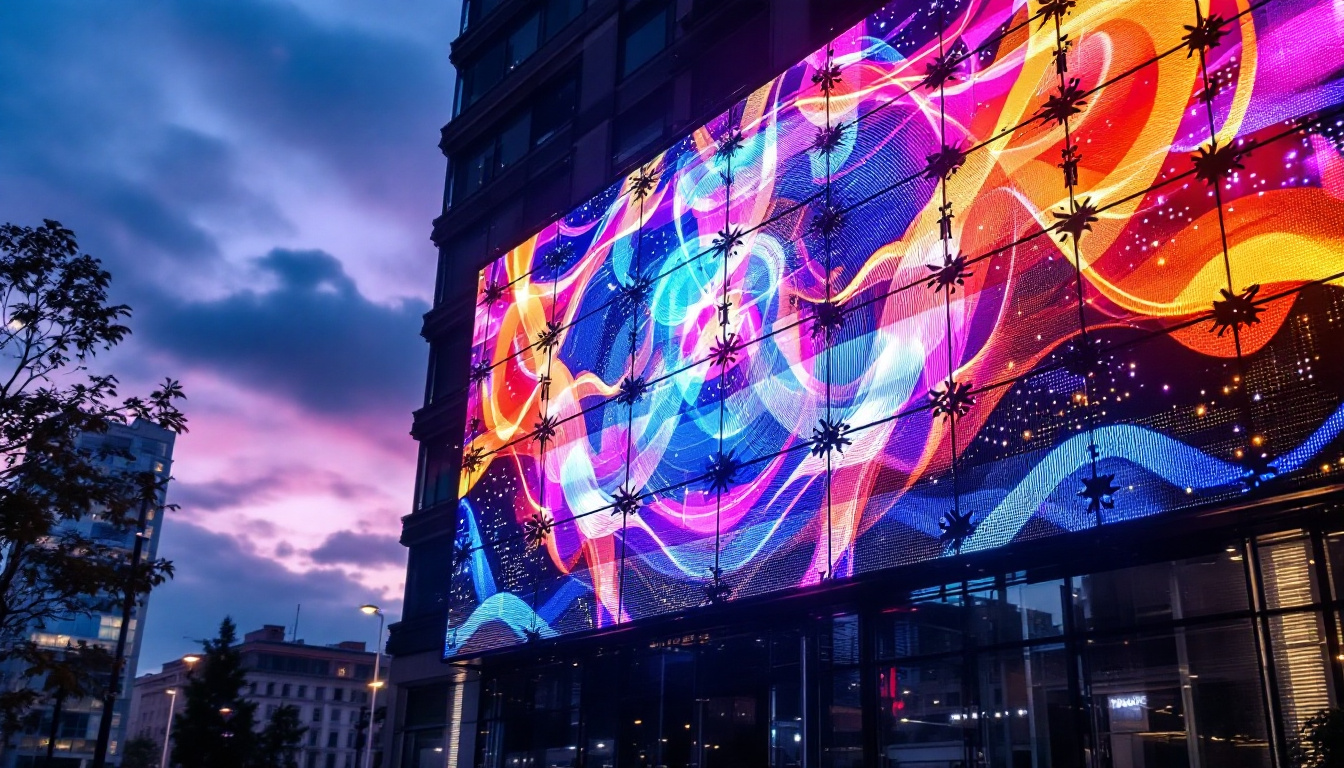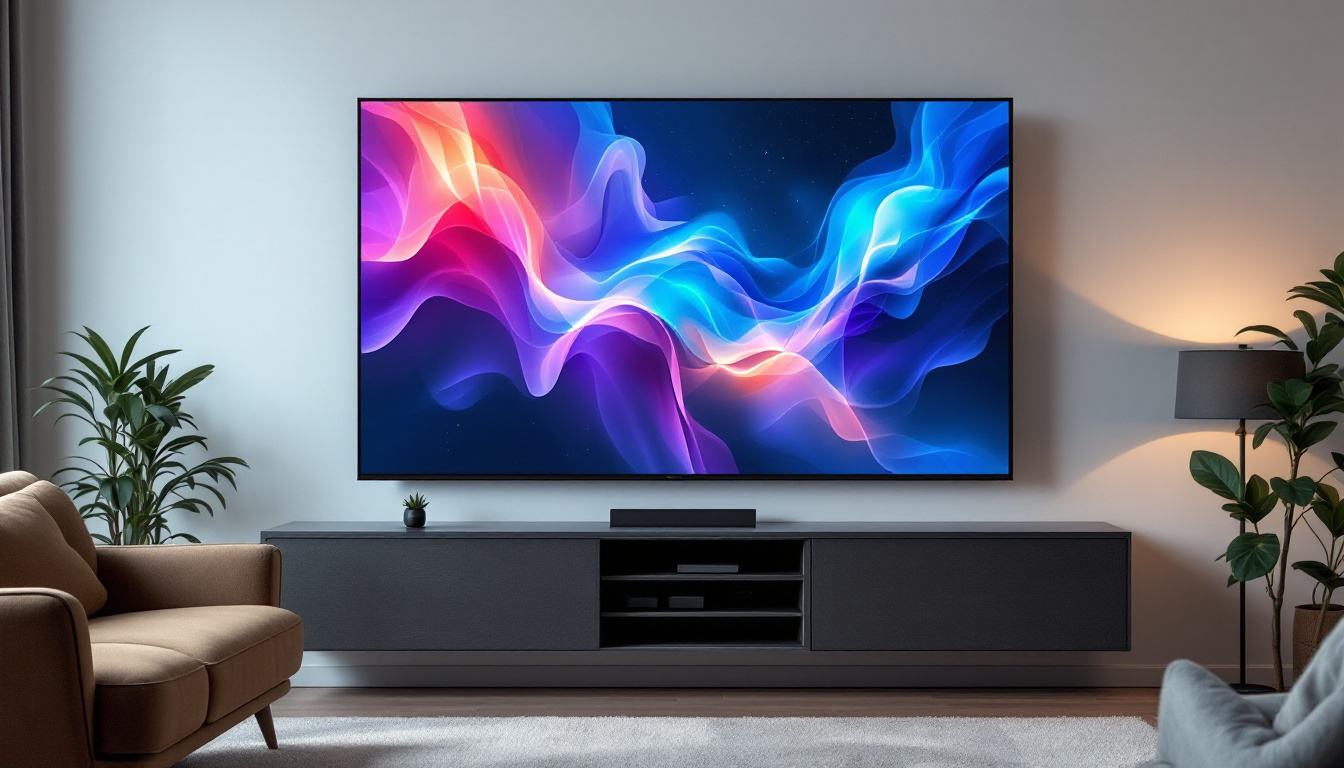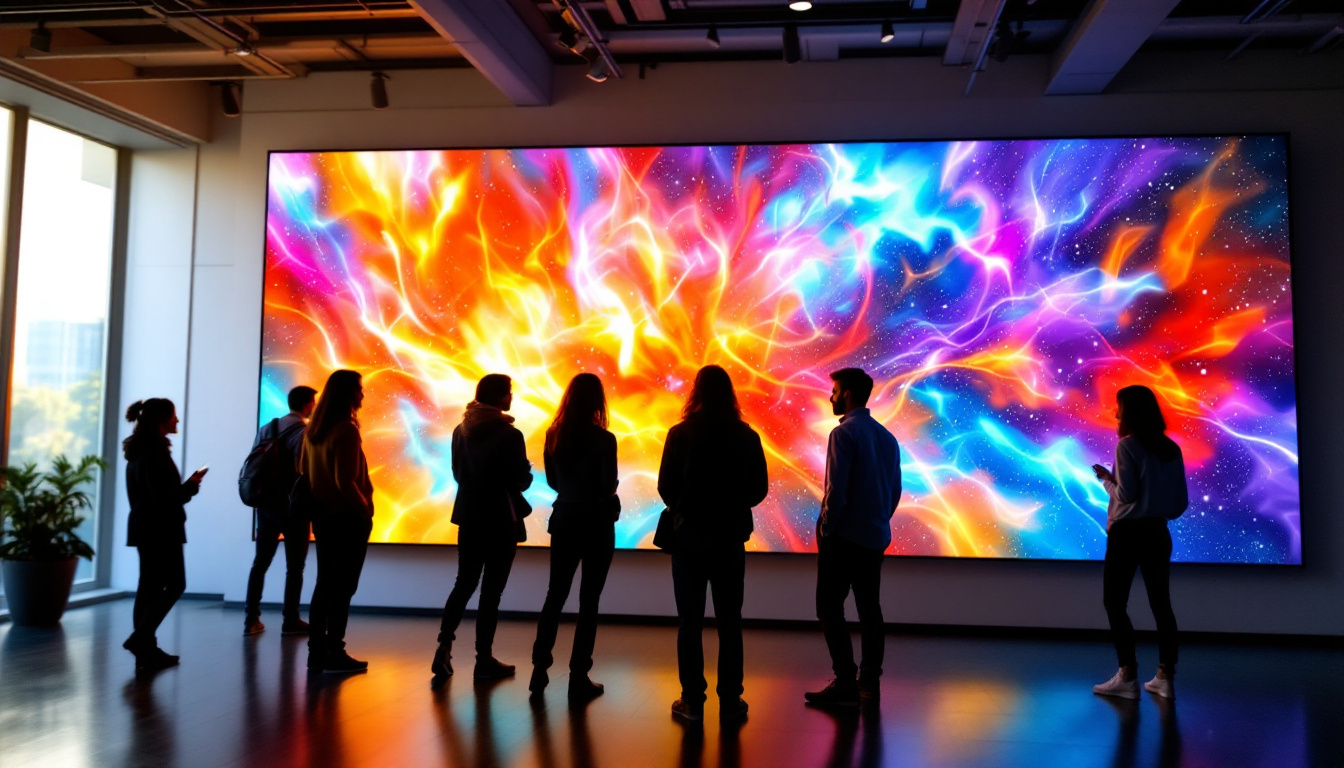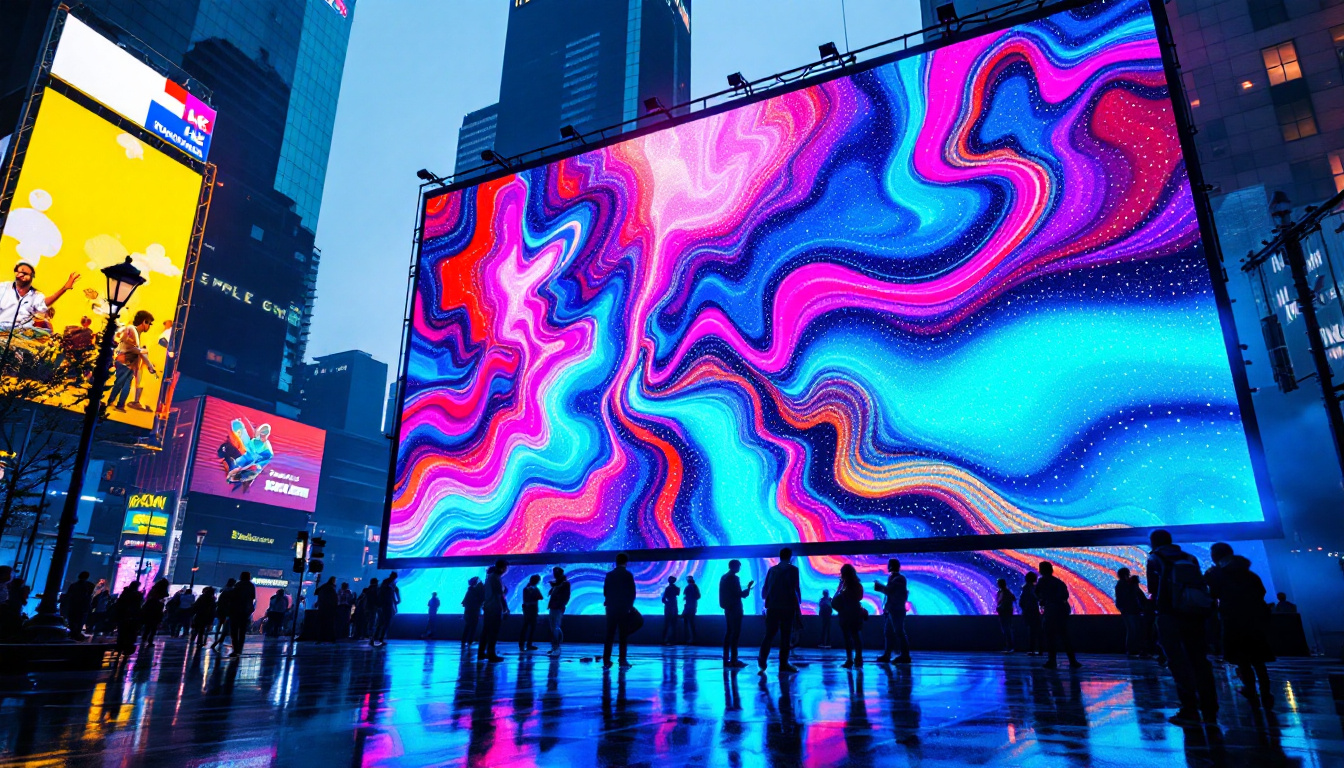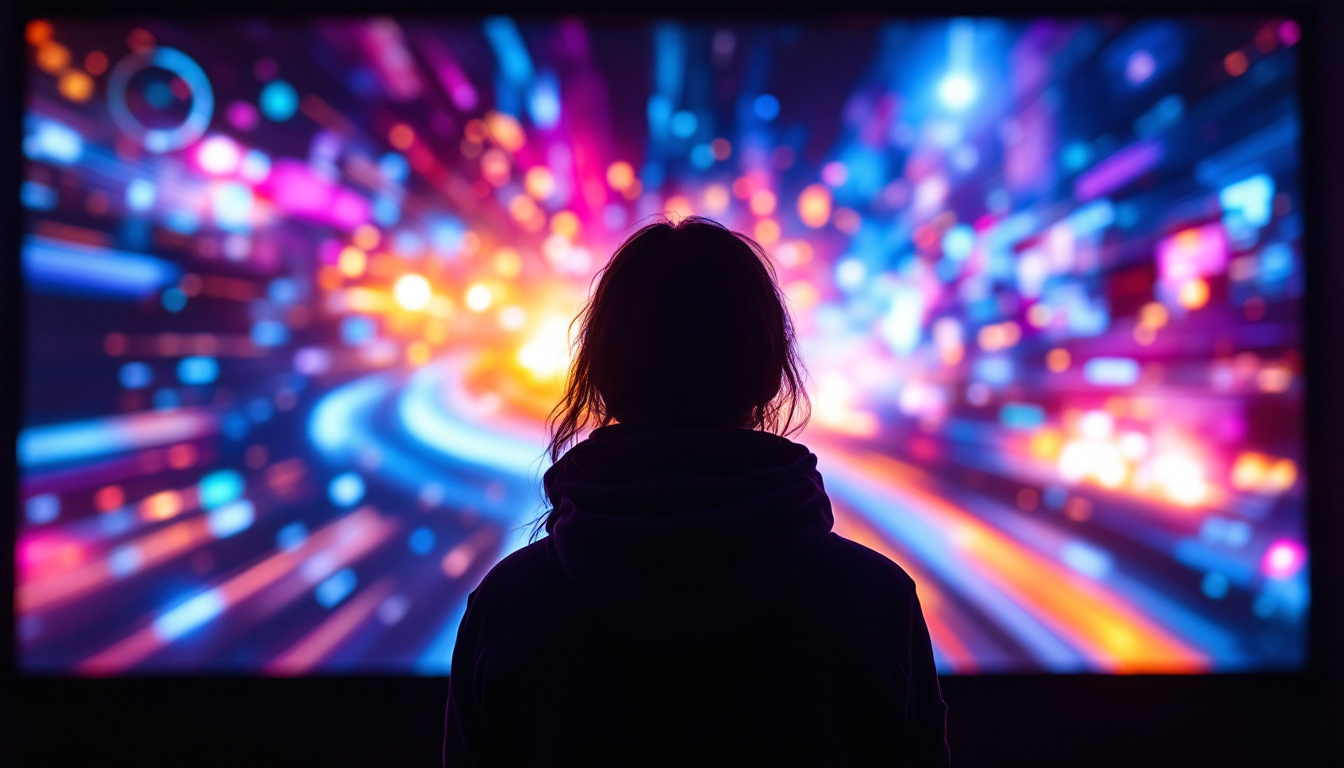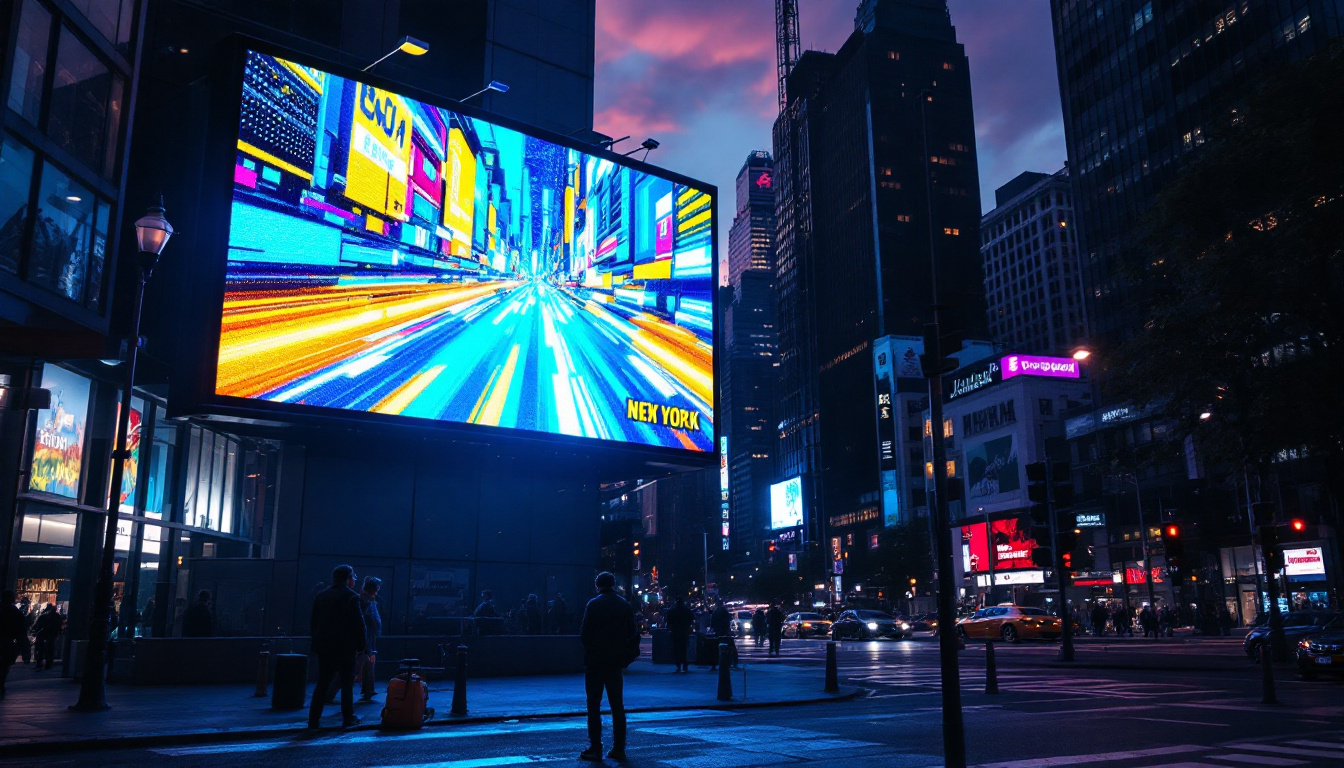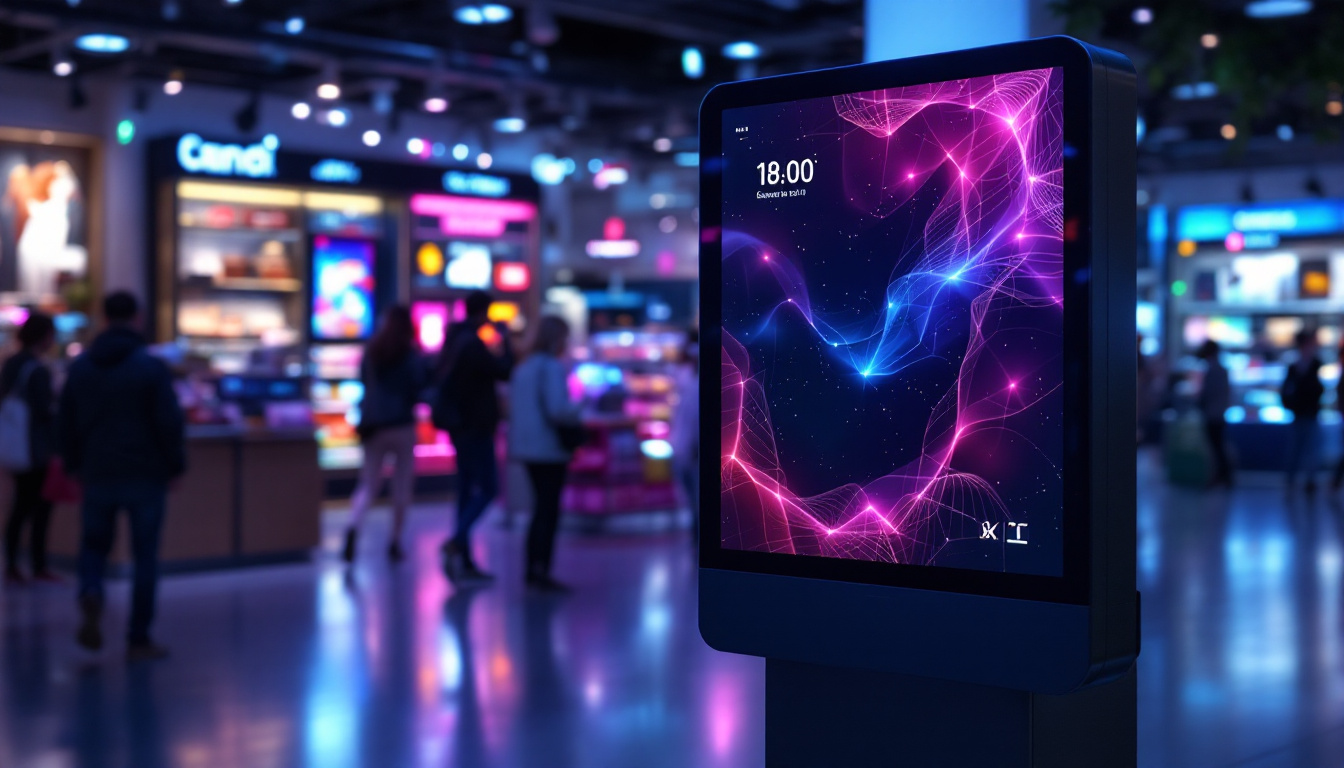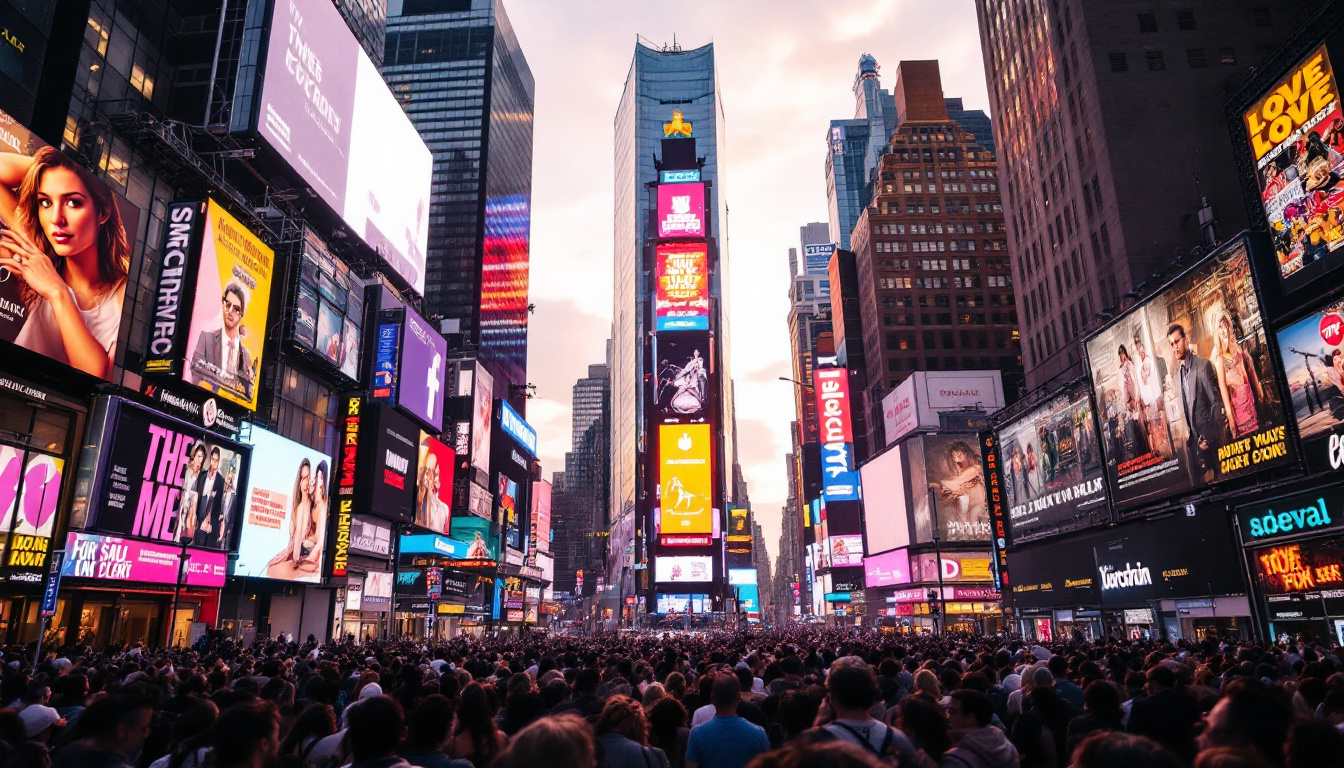In today’s fast-paced digital world, outdoor advertising has taken a significant leap forward with the introduction of LED screens. These vibrant displays have transformed the way businesses communicate with their audiences, offering dynamic content that captures attention and engages viewers. This article delves into the intricacies of outdoor LED displays, exploring their technology, benefits, applications, and future trends.
Understanding LED Technology
LED, or Light Emitting Diode, technology is at the heart of modern display solutions. Unlike traditional LCD screens, which rely on backlighting, LED screens utilize tiny diodes that emit light when an electric current passes through them. This fundamental difference results in several advantages that make LED displays particularly suitable for outdoor use. With their energy efficiency and reduced heat output, LED screens not only lower operational costs but also contribute to a more sustainable environment, aligning with the growing demand for eco-friendly technologies in various industries.
How LED Screens Work
LED screens consist of numerous individual pixels, each made up of red, green, and blue diodes. By adjusting the intensity of these colors, a wide spectrum of hues can be created. The arrangement of these pixels forms a matrix that displays images, videos, and animations. The high brightness levels of LED screens ensure visibility even in direct sunlight, making them ideal for outdoor environments. This capability is particularly beneficial for events such as concerts and festivals, where vibrant visuals can enhance the overall atmosphere and engage audiences more effectively.
Additionally, LED technology allows for a faster refresh rate compared to traditional displays. This means that moving images appear smoother and more fluid, enhancing the overall viewing experience. The modular design of LED screens also enables easy repairs and upgrades, contributing to their longevity. Furthermore, advancements in LED technology have led to the development of flexible displays, which can be curved or shaped to fit unique architectural designs, opening up new possibilities for creative installations in public spaces.
Types of Outdoor LED Displays
Outdoor LED screens come in various types, each designed for specific applications. The most common types include:
- Billboard Displays: These large-format screens are often used for advertising and can be found in high-traffic areas.
- Scoreboards: Common in sports venues, these displays provide real-time game updates and statistics.
- Digital Signage: Used by retailers and businesses, these screens convey promotional messages and information to customers.
Each type serves a unique purpose, but all share the common advantage of high visibility and dynamic content capabilities. Moreover, the integration of smart technology into outdoor LED displays allows for real-time content updates and targeted advertising based on audience analytics. This capability not only enhances engagement but also maximizes the effectiveness of marketing strategies, making outdoor LED displays a powerful tool for businesses looking to capture consumer attention in a crowded marketplace.
The Benefits of Outdoor LED Screens
Investing in outdoor LED displays offers numerous benefits that can significantly enhance a business’s marketing strategy. From cost-effectiveness to environmental sustainability, these screens provide a modern solution for reaching audiences effectively.
Enhanced Visibility and Engagement
One of the primary advantages of outdoor LED screens is their ability to attract attention. The bright, vibrant colors and high contrast ratios make these displays stand out, even in crowded urban environments. This enhanced visibility leads to increased engagement, as passersby are more likely to notice and interact with dynamic content.
Moreover, the ability to change content in real-time allows businesses to tailor their messages to specific audiences or events. For instance, a retailer can promote a flash sale during peak hours or adjust advertisements based on weather conditions. This flexibility maximizes the impact of each display, driving foot traffic and sales.
Cost-Effectiveness and Longevity
While the initial investment in outdoor LED screens can be substantial, the long-term cost savings are significant. Traditional advertising methods, such as printed billboards, require ongoing costs for production and installation. In contrast, LED displays allow for easy content updates without additional printing costs.
Furthermore, LED technology is known for its durability. Outdoor LED screens are built to withstand various weather conditions, including rain, snow, and extreme temperatures. With proper maintenance, these displays can last for over a decade, making them a wise investment for businesses looking to establish a long-term presence.
Applications of Outdoor LED Displays
The versatility of outdoor LED screens makes them suitable for a wide range of applications across various industries. From entertainment to transportation, these displays have become an integral part of modern communication strategies.
Advertising and Marketing
One of the most common uses of outdoor LED displays is in advertising. Businesses can showcase their products and services through eye-catching visuals that grab the attention of potential customers. The ability to change content frequently allows advertisers to promote seasonal offers, special events, or new product launches effectively.
Moreover, the interactive capabilities of some LED screens enable businesses to engage customers directly. Touchscreen displays can provide additional information, collect feedback, or even facilitate transactions, creating a more immersive experience.
Transportation and Wayfinding
Outdoor LED screens are also widely used in transportation hubs, such as airports and train stations. These displays provide real-time information about arrivals, departures, and delays, helping travelers navigate their journeys more efficiently. Additionally, LED screens can serve as wayfinding tools, directing passengers to various services and amenities within the facility.
In urban settings, LED displays can enhance public transportation systems by providing updates on bus and train schedules. This not only improves the overall travel experience but also encourages the use of public transport, contributing to reduced traffic congestion.
Entertainment and Events
In the entertainment industry, outdoor LED screens play a crucial role in enhancing live events. Concerts, sports games, and festivals utilize large LED displays to broadcast performances, highlight key moments, and engage audiences. The ability to display high-definition video content ensures that even those seated far from the stage can enjoy a clear view of the action.
Moreover, event organizers can use LED screens to promote upcoming shows, merchandise, or sponsors, creating additional revenue opportunities and enhancing the overall experience for attendees.
Challenges and Considerations
Despite their many advantages, outdoor LED screens also come with challenges that businesses must consider before making an investment. Understanding these challenges can help organizations make informed decisions and maximize the benefits of their displays.
Initial Investment and Maintenance Costs
The upfront cost of purchasing and installing outdoor LED screens can be a barrier for some businesses. While the long-term savings are substantial, the initial financial commitment requires careful consideration and budgeting. Organizations should conduct a thorough cost-benefit analysis to determine the potential return on investment.
Additionally, while LED screens are durable, they still require regular maintenance to ensure optimal performance. This includes cleaning the screens, checking for pixel malfunctions, and updating software. Businesses should factor these ongoing costs into their overall budget.
Regulatory Compliance
Outdoor advertising is subject to various regulations that can vary by location. Businesses must ensure that their LED displays comply with local laws regarding brightness levels, content restrictions, and placement. Failure to adhere to these regulations can result in fines or the removal of the display.
Engaging with local authorities and understanding the legal landscape is essential for businesses looking to deploy outdoor LED screens successfully.
Future Trends in Outdoor LED Displays
The outdoor LED display industry is continually evolving, driven by advancements in technology and changing consumer preferences. Staying informed about emerging trends can help businesses leverage new opportunities and maintain a competitive edge.
Integration with Smart Technology
As smart technology becomes increasingly prevalent, outdoor LED displays are likely to integrate with various digital platforms. This could include real-time data feeds, social media integration, and even artificial intelligence to personalize content based on audience demographics.
Such integrations can enhance the interactivity of LED displays, allowing businesses to create targeted campaigns that resonate with viewers. For instance, a retailer could display tailored promotions based on the time of day or the demographics of passersby.
Sustainability and Energy Efficiency
With growing concerns about environmental sustainability, the outdoor advertising industry is shifting towards more energy-efficient solutions. Newer LED technologies consume less power while delivering higher brightness levels, reducing the overall carbon footprint of outdoor displays.
Moreover, businesses are exploring ways to incorporate renewable energy sources, such as solar power, to power their LED displays. This not only aligns with sustainability goals but also reduces long-term operational costs.
Enhanced Content Creation
The demand for high-quality content is on the rise, and outdoor LED displays are no exception. As technology advances, the capabilities for creating stunning visuals and animations will continue to improve. Businesses will need to invest in creative content that captivates audiences and stands out in a crowded marketplace.
Innovative content strategies, such as augmented reality experiences, can further enhance viewer engagement and create memorable interactions. As competition increases, the ability to deliver compelling content will be crucial for success.
Conclusion
Outdoor LED screens have revolutionized the way businesses communicate with their audiences, offering a dynamic and engaging platform for advertising and information dissemination. With their numerous benefits, including enhanced visibility, cost-effectiveness, and versatility, LED displays are becoming an essential tool for modern marketing strategies.
While challenges such as initial investment and regulatory compliance exist, the potential rewards far outweigh the risks. As technology continues to evolve, businesses that embrace outdoor LED displays will be well-positioned to thrive in an increasingly competitive landscape. By staying informed about emerging trends and investing in high-quality content, organizations can maximize the impact of their outdoor advertising efforts and connect with audiences like never before.
Discover LumenMatrix’s Innovative LED Display Solutions
Ready to elevate your outdoor advertising and captivate your audience with unparalleled clarity and vibrancy? Explore LumenMatrix’s comprehensive range of LED display solutions, from impactful Outdoor LED Wall Displays to interactive Floor LED Displays and beyond. Each product is crafted with precision to ensure your message resonates with impact. Don’t miss the opportunity to transform your visual communication. Check out LumenMatrix LED Display Solutions today and step into the future of digital signage.

